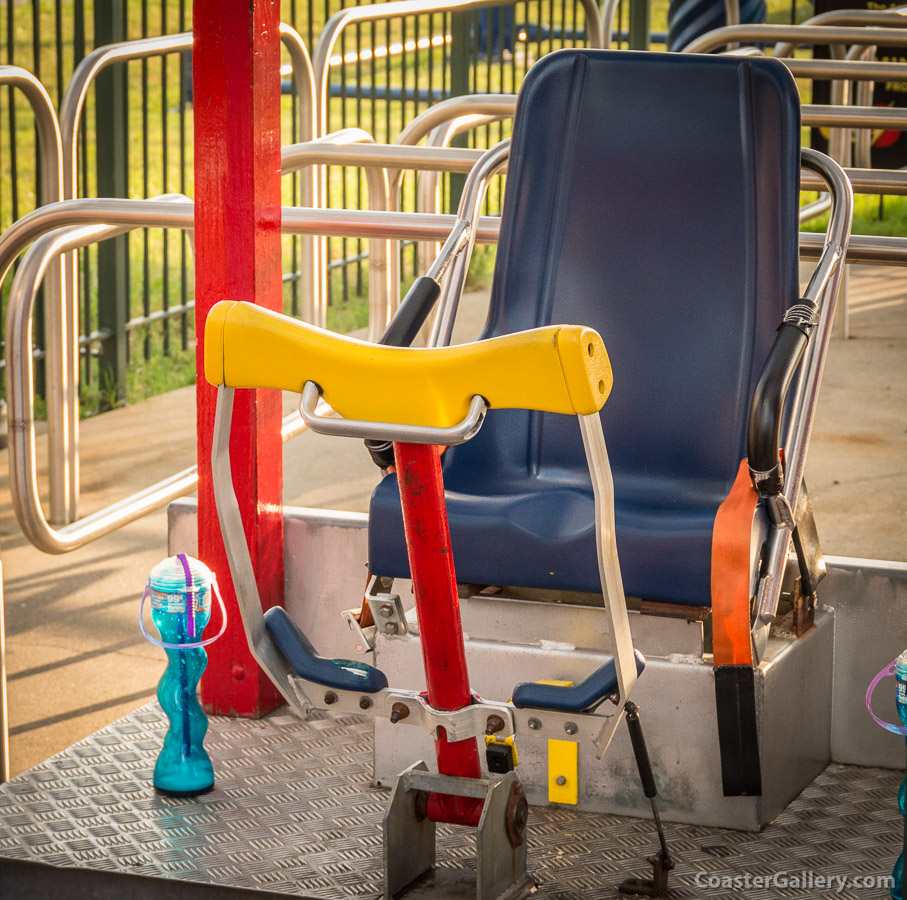
In the early 2000s, there were a couple of fatalities on hyper-coasters with similar "T-Bar" restraints. However, I can't really fault the design of the seat or the restraint. For example, one accident in Massachusetts involved a rider weighing over 300 pounds. It was determined that his large girth prevented the lapbar from properly restraining his thighs. Another accident happened in New York when a double-amputee was allowed to ride, but was ejected from the seat.
This test seat, which is designed to check if riders can fit in the seats even before they enter the waiting queue, shows two of the modifications added in the past decade. There is now an orange seatbelt. This is either a backup to the lapbar or a subtle way of measuring riders' waist sizes. Another addition is the metal brackets situated on both sides of the yellow lapbar. At the bottom of these metal bands are two small padded brackets that rest above riders' feet. Overall, these changes may limit the amount of body sizes and types that can fit, but it is important to realize every coaster has limitations and it is impossible to build a ride that can accommodate everyone. And as much as I love a thrilling ride, the most important thing always has to be safety!
